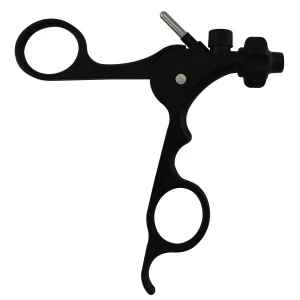- Home
- All Products
- Laparoscopic Instruments
- Disposable Laparoscopic Scissors
Disposable Laparoscopic Scissors
Disposable Laparoscopic Scissors
Disposable laparoscopic scissors are specialized surgical instruments used in minimally invasive procedures to cut tissues, sutures, and other materials within the body. These scissors are designed for single-use, offering advantages in terms of sterility, sharpness, and convenience. They are commonly used in various laparoscopic surgeries, such as cholecystectomy, appendectomy, and gynecological procedures.
Available as
Curved scissor 3mm, 330mm
Curved scissor 3mm, 220mm
Curved scissor 5mm, 330mm
Curved scissor 5mm, 430mm
Fully insulated mini blade curved scissor 5mm, 330mm
Fully insulated mini blade curved scissor 5mm, 430mm
Fully insulated curved scissor 5mm, 330mm
Fully insulated curved scissor 5mm, 430mm
Hook scissor 5mm, 330mm
Hook scissor 5mm, 430mm
Components and Design
- Blades: Sharp, precise cutting edges made from high-quality stainless steel or other surgical-grade materials.
- Shaft: A long, slender, insulated shaft that allows the surgeon to reach deep into the body cavity through small incisions.
- Handle: Ergonomically designed for comfortable grip and precise control, often featuring finger loops.
- Articulation Mechanism: Some models include mechanisms that allow for angled or rotational movement to enhance access and maneuverability.
- Tip Variations: Tips can be straight, curved, or angled to accommodate different surgical needs and preferences.
Uses
- Tissue Dissection: Cutting and separating tissues during laparoscopic procedures.
- Suture Cutting: Trimming sutures during and after suturing.
- Adhesion Removal: Cutting and removing adhesions within the abdominal cavity.
- Miscellaneous Cutting: Cutting various materials like mesh, small vessels, and ducts.
Advantages
- Sterility: Each pair is sterile-packed, reducing the risk of infection and cross-contamination.
- Sharpness: Guaranteed sharp cutting edges for each use, ensuring clean and precise cuts.
- Convenience: Eliminates the need for cleaning and sterilization, saving time and reducing the turnaround between surgeries.
- Cost-Effectiveness: Reduces costs associated with instrument reprocessing and potential damage from repeated sterilization.
- Consistency: Ensures consistent performance with each use.
Procedure
- Preparation: The surgical area is prepared, and the patient is positioned and anesthetized as needed.
- Insertion: The scissors are introduced into the body cavity through a trocar or laparoscopic port.
- Operation: The surgeon uses the scissors to cut tissues, sutures, or other materials as required by the procedure.
- Completion: After use, the scissors are removed from the body cavity.
- Disposal: The scissors are disposed of in a sharps container or according to hospital protocols for biohazardous waste.
Types and Variations
- Tip Designs:
- Straight Tip: For general cutting tasks and accessible areas.
- Curved Tip: For precise cutting around tissues and structures.
- Angled Tip: For difficult-to-reach areas and specific surgical techniques.
- Handle Designs:
- Standard Handle: Traditional scissor handles with finger loops.
- Ergonomic Handle: Designed for better comfort and control, often with additional features for ease of use.
- Articulating Scissors: Allows for flexible movement and better access to challenging areas within the body.
Examples of Procedures Using Disposable Laparoscopic Scissors
- Laparoscopic Cholecystectomy: Removal of the gallbladder, requiring tissue dissection and cutting of the cystic duct and artery.
- Laparoscopic Appendectomy: Removal of the appendix, involving tissue dissection and cutting of the appendix.
- Laparoscopic Hysterectomy: Removal of the uterus, requiring precise cutting of ligaments and tissues.
- Laparoscopic Colectomy: Removal of a portion of the colon, necessitating cutting and dissection of the colon and surrounding tissues.
- Laparoscopic Myomectomy: Removal of fibroids from the uterus, involving precise cutting and dissection of uterine tissues.
Clinical Considerations
- Size and Length: Selecting the appropriate size and length of scissors based on the specific procedure and the surgical site.
- Sterility and Disposal: Ensuring proper handling to maintain sterility before use and following appropriate disposal protocols after use.
- Technique: Employing the correct surgical techniques to optimize the use of the scissors and achieve the best outcomes.
Disposable laparoscopic scissors are crucial tools in modern minimally invasive surgery, offering the benefits of sterility, convenience, and consistent performance. They enhance the efficiency and safety of laparoscopic procedures, contributing to improved patient outcomes and streamlined surgical processes.








